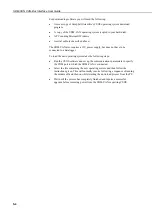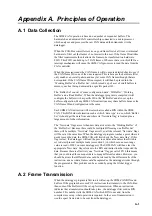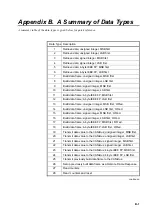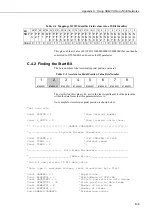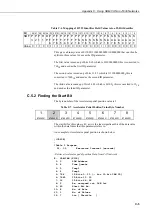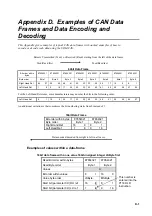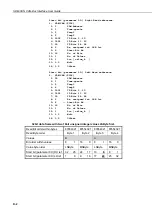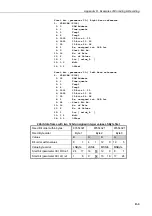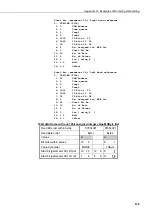
Appendix D. Examples of CAN Data
Frames and Data Encoding and
Decoding
This Appendix gives examples of typical CAN data frames with worked examples of how to
encode or decode such data using the SDM-CAN.
Bits are Transmitted (Txed) or Received (Rxed) starting from the left of the data frame.
Txed/Rxed
first
Txed/Rxed
last
64bit Data Frame
Bit order within
bytes
87654321 87654321 87654321 87654321 87654321 87654321 87654321 87654321
Byte order
Byte 1
Byte 2
Byte 3
Byte 4
Byte 5
Byte 6
Byte 7
Byte 8
Right Hand Ref
64 57
56 49
48 41
40 33
32 25
24 17
16 9
8 1
Left Hand Ref
1 8
9 16
17 24
25 32
33 40
41 48
49 56
57 64
For the Left Hand Reference, some manufacturers may number the bits in the following order:
Left Hand Ref
8 1
16 9
24 17
32 25
40 33
48 41
56 49
64 57
An additional variation is that sometimes the bit numbering starts from 0 instead of 1.
16bit Data Frame
Bit order within bytes
87654321
87654321
Byte order
Byte 1
Byte 2
Right Hand Ref
16 9
8 1
Left Hand Ref
1 8
9 16
Data encoded/decoded from right to left in all cases.
Examples of values within a data-frame
16bit data frame with a one value 16bit unsigned integer LSByte first
Rxed Bit order within bytes
87654321
87654321
Rxed Byte order
Byte 1
Byte 2
Values
A
Bit order within values
8 1
16 9
Value byte order
LSByte
MSByte
Start bit (parameter 09:) RH ref
16
9
8 1
Start bit (parameter 09:) LH ref
1
8
9 16
This number is
entered into the
P118 DLD
instruction
D-1




